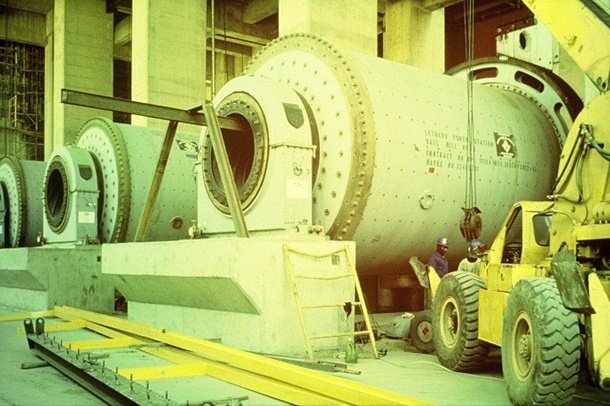LATEST FINANCIAL NEWS
OPEN LETTER: How to fix the boiler and mill problems at Medupi and Kusile
[ad_1]
A former Eskom engineer, in an open letter to energy analyst Chris Yelland, highlights three boiler problems at Medupi and Kusile power stations and provides possible corrective actions and a way forward.
The building of the coal-fired power stations, which started in 2007 and 2008, has been hit by cost overruns, poor engineering designs and allegations of corruption. Once hailed as the answer to the country’s electricity supply challenges, the costs for the plants have already escalated to over R300bn.
Sir
I am writing this to you hoping that with your considerable influence on our national crisis with Eskom you may be able to utilise this contribution to have some constructive effect.
My particular field of expertise was in the design of pulverised coal boilers. It was our bad experience with the boilers at Kriel that motivated me to make an in-depth study of South Africa’s coal. This eventually resulted in me presenting several technical papers dealing with the unique characteristics of our un-beneficiated steam coals, and in particular:
- “The characteristics of South African coals” – published by the SA Institute of Mining, May 1988.
- “Impact of coal quality on Lethabo boiler plant” – published by the SA Institute of Mechanical Engineers, Nov/Dec 1986.
I was the co-author of both papers as I had initiated and directed the research over several years.
The significance of our finding was that the international standard analysis criteria for steam coals does not reflect the “reactivity” (rate of combustion) of our coals, unlike other more reactive bituminous steam coals found in USA, Europe, UK, Australia and India.
The significance of this is that international boiler designers do not appreciate that our coals burn much slower. To counter this, Eskom needs to pulverise our coals much finer than required elsewhere, in order to compensate for the slower burn-rate.
Tube mills under construction at Eskom’s Lethabo power station. (Picture courtesy Eskom)
In the case of the boilers for Matimba, Kendal, Majuba and Lethabo, I insisted on furnaces of larger dimensions, as well as the use of tube mills in place of previously-used vertical spindle rotating table mills.
Tube mills, similar to those used in the gold mining industry, produce finer ground coal, as was well proven at Lethabo, where the calorific value of the coal is equivalent to that of a Provita biscuit. This coal is the most inferior coal used by Eskom, with an ash content of in excess of 38%, in addition to its low reactivity.
I presented a similar paper at an international conference at the VGB International Power Station Conference in 1992 in Germany, which is now available in German and Japanese.
Boiler problems at Medupi and Kusile
The boiler contractor for Medupi and Kusile only had previous experience with coals in Australia and Japan, but never with South African coals. I have been advised (by third parties) of the problems being experienced at these two new Eskom plants, and with the limited information available to me, I conclude that these major problems are due to the following factors:
- The boiler internal volume and dimensions are undersized for the slow-burning coals used.
- The flue gas velocities are too high, causing excessive erosion of the burners, as well as of the furnace tubing.
- The change during the early contract stage from the tube mills originally specified, to vertical mills, was a major error. The change was proposed by the boiler contractor with a price reduction, which Eskom accepted. The pulverised coal fineness required cannot be achieved, and the mill wear will be excessive.
Possible corrective actions and way forward
To my mind, the possible available corrective actions and way forward are:
- It would not be realistic to attempt to beneficiate the coal to improve its reactivity. This would only reduce the ash content, but the cost could not be justified.
- The source of the problem is the coal pulveriser mills not being able to produce the more stringent fineness required. This results in coal/char particles burning higher up in the furnace, causing excessive reheater temperatures, etc.
- One could attempt to increase the rotational speed of the vertical spindle mills by at least 15%. This would require gearbox modifications. It would also result in increased mill internal wear, but could improve the fineness of the pulverised coal produced.
- In my opinion, the only real option for a solution is to change the vertical mills to tube mills of similar to those used at Lethabo, Kendal, etc. This should be done to the uncompleted units at Kusile first. This is a major construction change, but in my view, possible and worthwhile, and would change the combustion behaviour in the entire boiler. There would be two years to complete the change on the last units at Kusile.
- It is most likely that output of the boilers will have to be de-rated, as the furnaces are undersized, and the existing coal mills are incapable of achieving the required fineness at their full output rate.
All of this would not have occurred had the boiler contractor utilised the boiler plant specification which we at Eskom helped evolve over many years, and applied successfully at the Lethabo, Kendal and Matimba power stations. These stations achieved availabilities of over 80% for several years.
Sincerely
Alex J Ham
*Ham worked for Eskom for 30 years, where he held the position of Chief Engineer: Power Station Design. During this period, he was responsible for the overall design of Eskom’s Lethabo, Majuba, Matimba and Kendal power stations. During the latter part of his career, he was appointed Executive Director: Technology. He retired in 1994 and has had no formal contact with Eskom since then.
Disclaimer: All letters and comments published in Fin24 have been independently written by members of the Fin24 community. The views are therefore their own and do not necessarily represent those of Fin24.
[ad_2]
Source link









